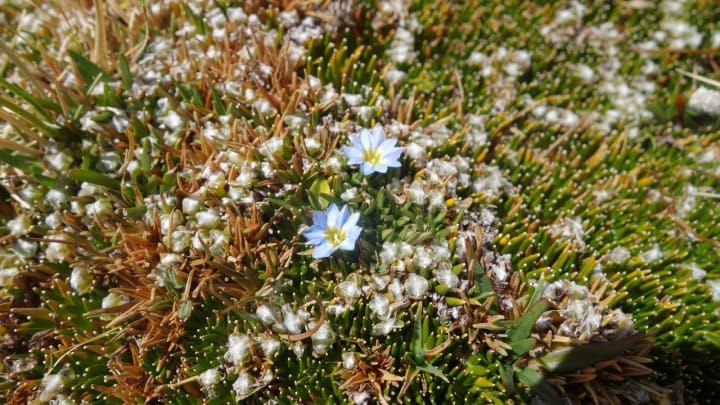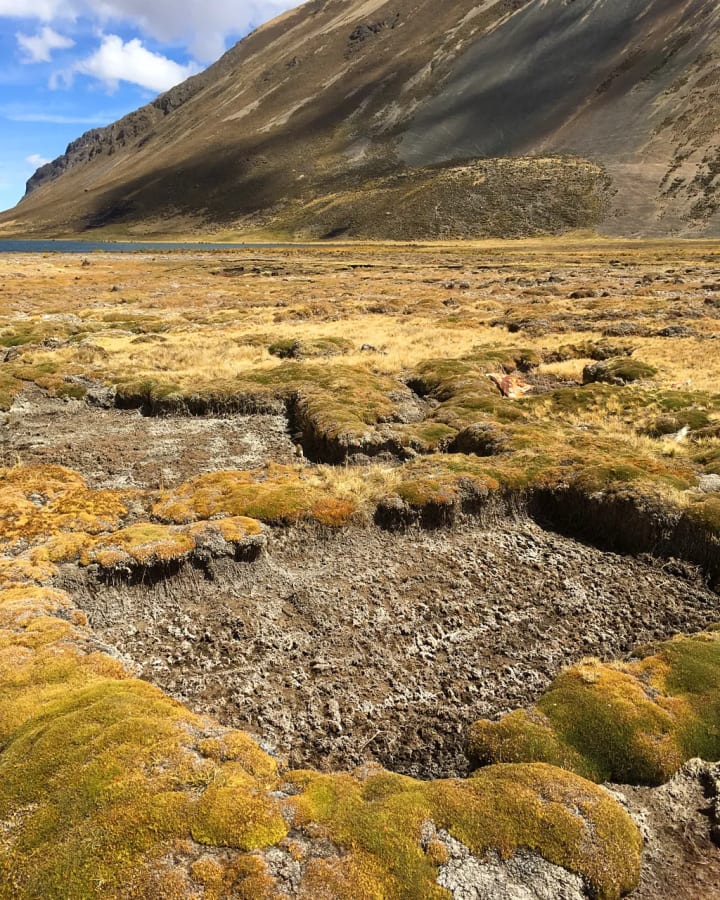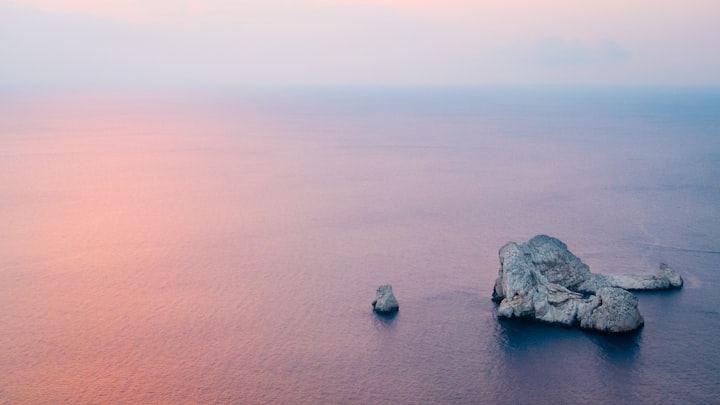Why Peru is reviving a pre-Incan technology for water
Peru is turning to ancient indigenous techniques and natural ecosystems to keep its taps running, as climate change threatens to dry out its water supply.

Pre-pandemic, in the austral winter, I drove north out of Lima, up into Peru's highlands to the village of Huamantanga (wa-mon-TONG-a). I was traveling with scientists who were studying local farmers' use of a 1,400-year-old technique to extend water availability into the long dry season.
Wending our way through the narrow Chillón River Valley, a slim swath of irrigated green crops hemmed in by sheer walls of tawny rock, we crossed the river and began grinding up a single-lane dirt road clinging to the side of a steep mountain. At about 3,500m (11,500ft), we reached a plateau with fields of avocados, hops, potatoes and beans and, finally, the village, where two-storey buildings of mud bricks and concrete lined narrow dirt streets. Burros, horses, cows, dogs and people puttered around.
The Andes Mountains are one of six places in the world where complex civilisations emerged, spurred by precipitation so seasonal it was a catalyst for hydrological innovations again and again. People cultivated deep knowledge of water and the underground, deploying strategies that still astonish – and which some still use.

Today, modern Peruvians are redeploying that ancient knowledge and protecting natural ecosystems such as high-altitude wetlands to help the country adapt to climate change. It's one of the world's first efforts to integrate nature into water management on a national scale.
Like the slow food movement, slow water approaches are bespoke: they work with local landscapes, climates and cultures rather than try to control or change them
Peru is among the world's most water-insecure countries. The capital Lima, home to a third of the country's population, sprawls across a flat desert plain and receives just 13mm (0.5 inches) of annual rainfall. To support that human abundance, it relies on three rivers born in the Andes that rise behind the city, soaring to 5,000m (16,400ft) in just 150 kilometres (93 miles). Lima residents are not alone in this reliance on mountain water. An estimated 1.5 billion people worldwide could depend on water flowing from mountains by 2050, up from 200 million in the 1960s.
Water scarcity in Peru is getting worse as a result of climate change. Within living memory, mountain glaciers have melted and the rainy season has shrunk to just a couple of months. Already Lima's water utility Sedapal can only supply customers 21 hours a day, a rate that Ivan Lucich, executive director of the national water regulator Sunass, says he expects to further decline in the coming years. A 2019 World Bank report evaluating drought risk in Peru concluded that the capital's current strategies to manage drought – dams, reservoirs, storage under the city – will be inadequate by as early as 2030.

Several years ago, desperate for water security, the country's leaders did something radical: they passed a series of national laws requiring water utilities to invest a percentage of their customers' bills in "natural infrastructure". These funds – called Mechanismos de Retribucion por Servicios Ecosistemicos (Mechanisms of Reward for Ecosystem Services) or MRSE – go to nature-based water interventions, such as restoring ancient human systems that work with nature, protecting high-altitude wetlands and forests, or introducing rotational grazing to protect grasslands. Before, it was considered a misuse of public funds if utilities invested in the watershed. Now it's required.
As climate change brings water change worldwide, conventional water control structures are increasingly failing
As climate change brings water change worldwide, conventional water control structures are increasingly failing. Such human interventions tend to confine water and speed it away, erasing natural phases when water stalls on land. Nature-based solutions, on the other hand, make space and time for these slow phases. In researching my forthcoming book on the subject, I've come to think of them as "slow water". Like the slow food movement, slow water approaches are bespoke: they work with local landscapes, climates and cultures rather than try to control or change them. They provide multiple other benefits too, including carbon storage and homes for threatened plants and animals.
For these reasons, conserving wetlands, river floodplains and mountain forests for water management is a growing movement worldwide, including among institutions such as the United Nations and the World Bank. But most projects to date are small and disconnected, so people tend to think of them as attractive side features, rather than a key tool. It's akin to the long-held attitude toward solar and wind power that is swiftly becoming outdated: they're nice but were thought not to be capable of playing a major role in meeting our energy needs. Peru's national programme, however, has the potential to demonstrate how effective slow water solutions can be when implemented on the scale of watersheds.
Yet despite Peru's forward-thinking policies, putting it into practice has been slow going, due in part to high turnover in government – including five presidents in five years. Another big hurdle, and one that most countries face: overcoming ingrained practices in the water sector to try something new.

In 2018, Global Affairs Canada and the United States Agency for International Development pledged to invest $27.5m (£19.6m) over five years to help Peru get its innovative programme off the ground. The money went to Forest Trends, an NGO that has been working on nature-based solutions for water in Peru since 2012. The executive director of its Lima office, Fernando Moimy, has long championed the idea, first in government as the former chief of Sunass, then via Forest Trends. The NGO's initiative, called Natural Infrastructure for Water Security, aims to provide technical know-how, says Gena Gammie, deputy director of the project.
Now the effort is gaining momentum. Forty of the country's 50 water utilities are collecting MRSE funds and have raised more than $30m (£21m). Sunass expects them to raise at least $43m (£31m) by 2024. That money is being invested in more than 60 projects across the country. Among those being supported by Lima's water utility Sedapal are projects shoring up an ancient water storage technique and protecting rare, high-altitude cushion bogs.
Planting the water
This is what had brought me on the precipitous journey through the Peruvian highlands north of Lima, to the village of Huamantanga, with scientists studying the region's age-old water management techniques.
The people who live here are comuneros: members of an agricultural collective. They use water canals called amunas – a Quechua word meaning "to retain" – to divert wet-season flows from mountain streams and route them to natural infiltration basins. The strategy, invented by an ancient people called the Huari (WAR-i), is still practiced here and in a few other Andean villages. Because the water moves more slowly underground as it travels through gravel and soil, it emerges downslope from springs months later, when the comuneros collect it to water their crops. Because much of their irrigation soaks into the ground and eventually makes its way back to the rivers that supply Lima, repairing abandoned amunas scattered throughout the highlands could extend water into the dry season for city dwellers too. Hence Sedapal's interest.

In Huamantanga's main square, in front of a Catholic church, I met Katya Perez, a social researcher with the NGO Condesan who studies how people interact with water systems. She has cultivated relationships with the comuneros here, collecting their knowledge and traditions for maintaining the amunas. For example, they have ceremonies around cleaning and blessing the canals, because they know that annual silt removal keeps them functioning well.
If we plant the water, we can harvest the water. But if we don't plant the water, then we will have problems – Lucila Castillo Flores
From town, the amunas lie further above us, at about 4,500m (14,800ft), so we rent horses from villagers and ride up through the sun-drenched puna grassland, which is scattered with scrubby chamise bushes and lupine in decadent purple flower. The mountains stack behind each other into seeming infinity and a giant bird – possibly an Andean condor – wafts overhead. Finally, I spy an amuna.
Built by carefully placing rocks together, it's about two feet wide and a couple of feet deep and winds like a sinuous snake along the contour of the hills. It's July, mid-dry season, and the amuna is nearly empty of water, having delivered its liquid riches to a rocky, bowl-shaped depression where it infiltrated into the ground. One comunera, Lucila Castillo Flores, a grandmother in a skirt and white-brimmed hat, likens what happens here to sowing water, using the verb sembrar: to plant. "If we plant the water, we can harvest the water," Flores says. "But if we don't plant the water, then we will have problems."
Just before the diversion into the amuna, researchers installed a small weir, a metal plate set vertically across the stream with a V-shaped notch. A classic tool to monitor stream flow, the weir creates a small pond, raising the water level so it flows through the V even when low, explained one of my scientist companions, hydrological engineer Boris Ochoa-Tocachi, chief executive of the Ecuador-based environmental consultancy firm ATUK and an advisor to Forest Trends. Water height is measured with a pressure transducer, an instrument submerged in the weir's pond. Greater weight on the sensor means higher water. Data collected here informed a study of the amunas that was part of Ochoa-Tocachi's thesis at Imperial College in London and published in Nature Sustainability in 2019.

Hopping back onto the horses, we rode partway down the mountain and dismounted at a spring fed by amunas. Here, water that had been traveling through rock and soil seeped out into a burbling stream. "You see, it's actually a lot of water compared to the stream that we saw in the weir," Ochoa-Tocachi says, with obvious satisfaction.
One of the most remarkable things about the amunas is that the comuneros know which canal feeds which spring, meaning they understand the path water takes underground. Co-author Perez's interviews with local people documented this knowledge, which had been passed down through the generations.
Urbanites tend to discount the expertise of rural and Indigenous people, says Ochoa-Tocachi, but the researchers were able to verify their information as "very accurate" by adding tracers to amunas' flows and then using sensitive detectors to track those molecules' emergence in the spring-fed ponds. This finding "surprised us", says Ochoa-Tocachi. "It shows that we can use indigenous knowledge to complement modern science to provide solutions to current problems."
He and his coauthors then modeled how restoring the many abandoned amunas scattered throughout the Andean highlands could increase water supply for Lima, which already comes up about 5% short – a deficit of about 43 million cubic metres.

Focusing just on the largest watershed of the three that supply Lima, they calculated a diversion of about 35% of the wet-season stream flows into the amunas, leaving the rest in the river to support aquatic life. They assumed that half of the diverted water would also go to the environment, deep underground or released into the atmosphere via plants. Nevertheless, what remained was 99 million cubic metres – more than double what Lima needs. They also showed that the diverted water spends between two weeks to eight months underground, with an average delay of 45 days. Slowing this water would increase river flows at the start of the dry season by 33%, postponing Lima's need to dip into its reservoirs.
Because engineers who make decisions about water projects require hard data like this to deploy projects, such research is critical to changing how we manage water. It translates slow water projects' efficacy into the language engineers use. Encouraged by the findings, Sedapal plans to invest $3m (£2.1m) in shoring up 12 amunas above Huamantanga, building two more, and restoring the neighboring grassland, according to Oscar Angulo, water and sanitation coordinator for natural infrastructure investment with Forest Trends.
Soggy cushions
Sedapal and other water utilities in Peru are also investing in natural ecosystems. Leaving Lima again, this time heading north-east along the Rimac River, I accompanied a conference of regional water experts to a rare, high-altitude tropical peatland called bofedale, or cushion bog. Unique to the Andes, bofedales are dominated by plants well adapted to tropical mountain conditions of "summer every day and winter every night", thriving in intense sun, stiff winds, a short growing season, daily frost and seasonal snow. The low-growing, firm but spongey plants are pocked with small star-shaped flowers and interspersed with little pools of water.

Peatlands, including bofedales, have a higher percentage of organic matter than other soils, making them unusually good at holding water. Though peatlands cover just 3% of land area, they store 10% of all freshwater (not to mention 30% of the world's soil carbon). In the steep landscape of the Andes, bofedales slow water runoff, preventing floods and landslides. As the glaciers that once stored water melt, bofedales play an even more important role in holding water for supply in the dry season. Because they stay green year-round, bofedales are also biodiversity hotspots, frequented by birds and mammals, including deer, pumas, Andean fox, pampas cats, and vicuña and guanaco, wild ancestors of domesticated alpacas and llamas.
After hours of driving up into the clouds, we reached a spot at about 4,500m (14,800ft) elevation where the valley widened, holding a seasonal lake and bofedale. But something was terribly wrong. Squares of soil five feet (1.5m) long and a foot (30cm) deep had been cut out in a checkerboard pattern by peat poachers to sell to plant nurseries in Lima.
This peat, laid down over millennia, was destroyed in a few minutes. The remaining patches, freshly exposed to the elements, smelled of decay as organic matter oxidised. We stumbled across the uneven surface of the valley, our footsteps kicking up red duff and dust.
But in March, officials travelled up the long road to the local village, Carampoma, for a ceremony to kick off Sedapal's $850,000 (£600,000) investment to restore the devastated area and to protect the healthy bofedales that remain. The project will work with the community to move grazing away from affected areas and to introduce surveillance of bofedales.

Peru has laws to protect wetlands, but enforcement jurisdiction is murky. To clarify the situation, Forest Trends is meeting with authorities and developing a manual for the community so local people will know what to do (such as take photos and GPS coordinates) and which authorities to notify, says Angulo. To restore the damaged wetlands, people will reintroduce plants harvested carefully from a nearby site and ensure water flow to support them. Scientists don't know how long it will take to restore the peat, but Angulo says he hopes that nature can start to repair itself quickly with a little help.
In all of these projects, benefits for the local community are critical, says Angulo, so they are motivated to keep up land and water management practices that ultimately benefit the wider watershed. Without that, "two to three years after, it will not be sustainable", he says.
Although every country has unique water issues, landscapes and cultures, other places can learn from Peru's experience. Europeans dependent upon the Alps for water and Asians who rely on the Himalayas are also losing their glaciers to climate change and will need new ways to capture floods to protect homes and businesses and to store water for later. Human activity that degrades land's ability to hold water can be reversed, whether it be deforestation of Kenya's mountain water towers, or overgrazing in the western United States.
Expanding slow water solutions across watersheds has a steep learning curve, but the seriousness of the climate crisis requires quick action. "We don't have all the information we'd love to have today to make the best possible decisions. But we can make good decisions," says Gammie, adding that scientific monitoring is allowing them "to learn and improve as we go".






Comments
There are no comments for this story
Be the first to respond and start the conversation.